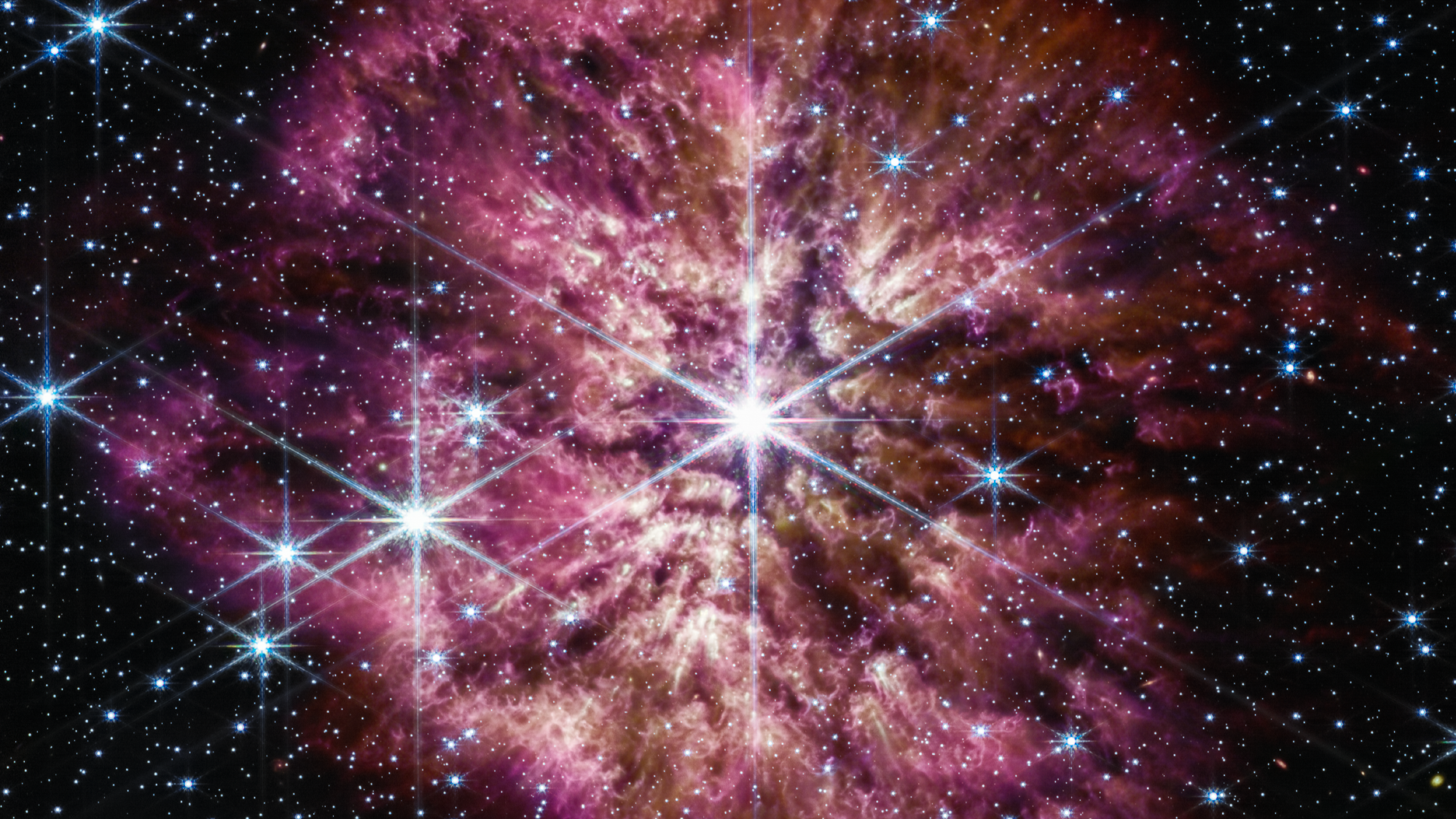James Webb Space Telescope captures star going supernova in a dazzling cloud of dust
NASA's James Webb Space Telescope has snapped a picture of WR 124, a rare Wolf-Mayet star 30 times the size of our sun, ejecting a luminous cloud of cosmic dust.

The James Webb Space Telescope (JWST) has captured a dazzling image of a star about to go supernova in a massive explosion.
The picture, released by NASA on Tuesday (March 14), shows the star WR 124 in the middle of a spectacular cosmic cloud. As it goes supernova, the star, which is about 30 solar masses, is expelling its outer layers; so far, it has ejected more than 10 solar masses' worth of material. This is a rarely seen phenomenon in some stars' life cycle called the Wolf-Rayet (WR) phase.
"Massive stars race through their life cycles, and only some of them go through a brief Wolf-Rayet phase before going supernova, making Webb's detailed observations of this rare phase valuable to astronomers," NASA officials wrote in a description of the images.
The gigantic star resides 15,000 light-years away in the constellation Sagitta.
TheJWST first snapped a photo of WR 124 in June 2022, just after it became operational.The star's luminous halo is captured in unprecedented detail thanks to the telescope's ability to detect the infrared glow of gas as it cools down to form cosmic dust.
Related: James Webb Telescope spots galaxies from the dawn of time that are so massive they 'shouldn't exist'
The cloud could survive the star's supernova collapse and contribute to the universe's "dust budget," NASA officials said. "Dust is integral to the workings of the universe," they wrote. "It shelters forming stars, gathers together to help form planets and serves as a platform for molecules to form and clump together — including the building blocks of life on Earth."
Sign up for the Live Science daily newsletter now
Get the world’s most fascinating discoveries delivered straight to your inbox.
The universe currently contains more dust than astronomers can explain. "The universe is operating with a dust surplus budget," NASA officials wrote in the image description. But JWST observations like this one could shed light on the mysterious origin of all this dust.
"Before Webb, dust-loving astronomers simply did not have enough detailed information to explore questions of dust production in environments like WR 124, and whether the dust grains were large and bountiful enough to survive the supernova and become a significant contribution to the overall dust budget," they wrote. "Now those questions can be investigated with real data."
On Oct. 13, 2022, astronomers discovered an early-warning system to watch supernova explosions as they unfold. As seen on the image of WR 124, a thick cocoon of circumstellar dust builds around stars in the last few months before they blow up. In the aftermath of a supernova event, all that is left of a star is a dense core, which can turn into a neutron star.
Also last year, scientists discovered a dead neutron star on a collision path with a massive star, which they think is doomed to explode in a fiery kilonova — an explosion caused by two stellar corpses zooming into each other.

Sascha is a U.K.-based staff writer at Live Science. She holds a bachelor’s degree in biology from the University of Southampton in England and a master’s degree in science communication from Imperial College London. Her work has appeared in The Guardian and the health website Zoe. Besides writing, she enjoys playing tennis, bread-making and browsing second-hand shops for hidden gems.









